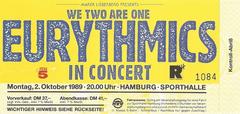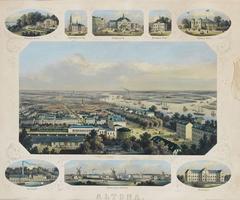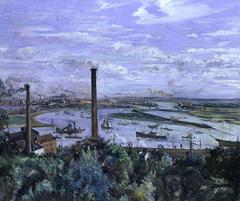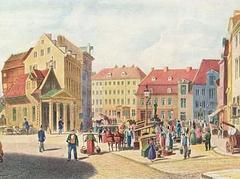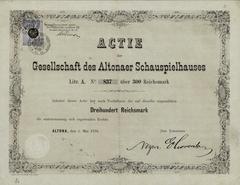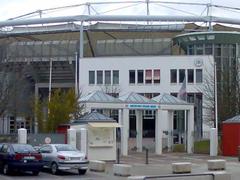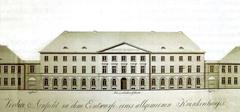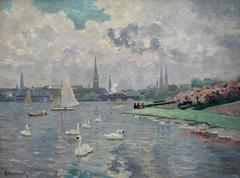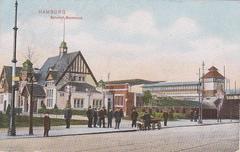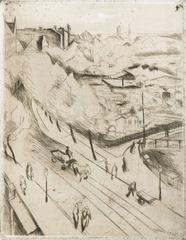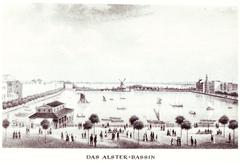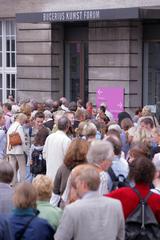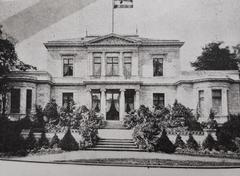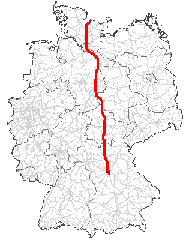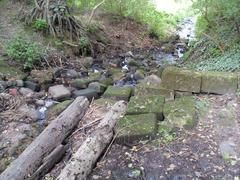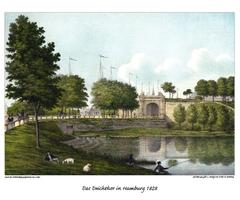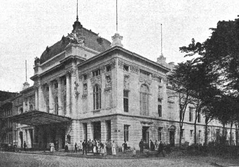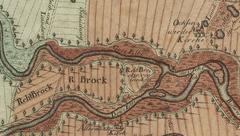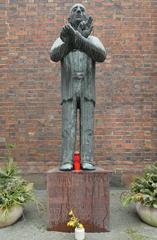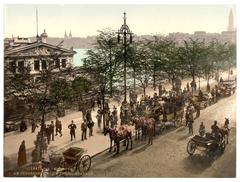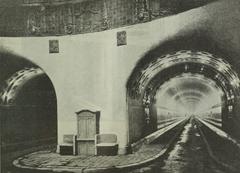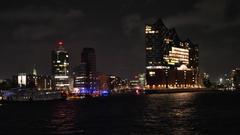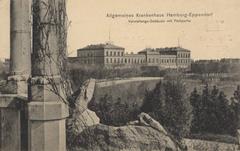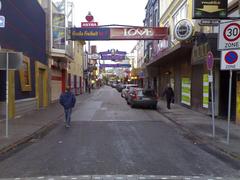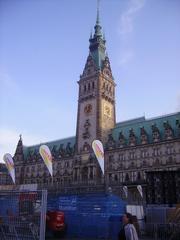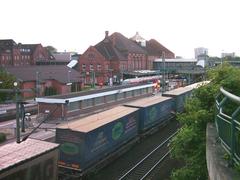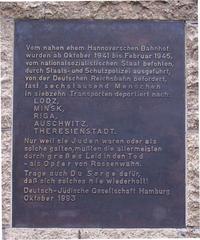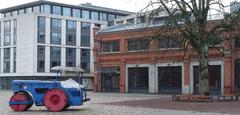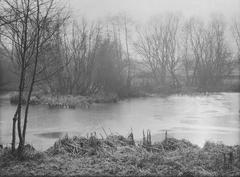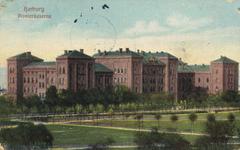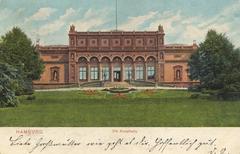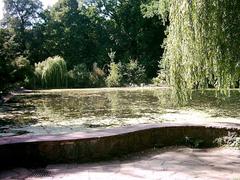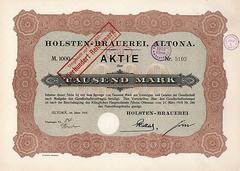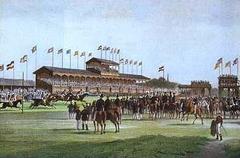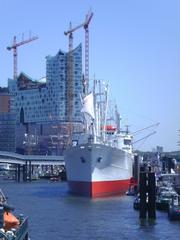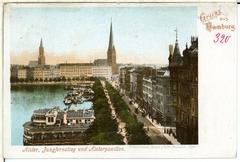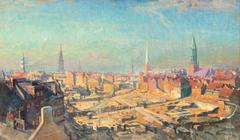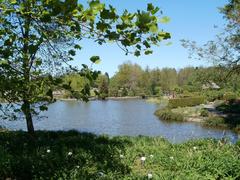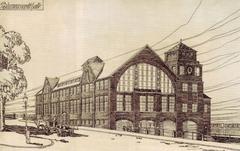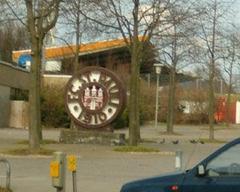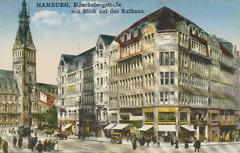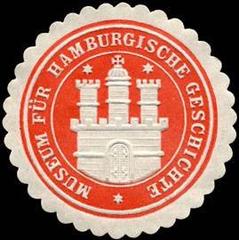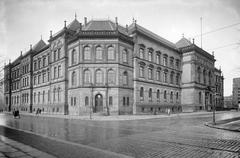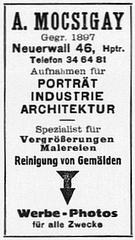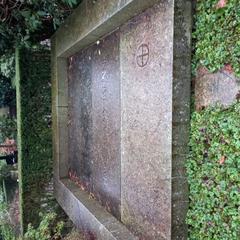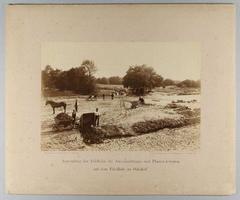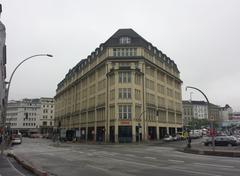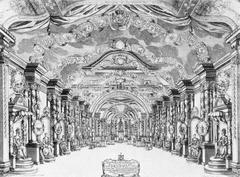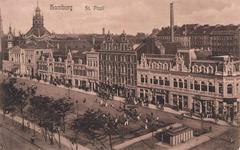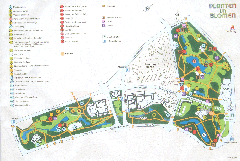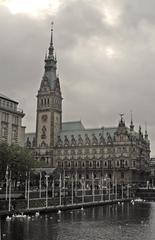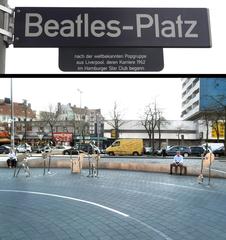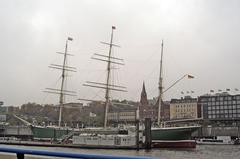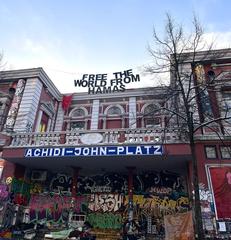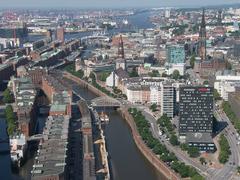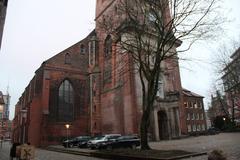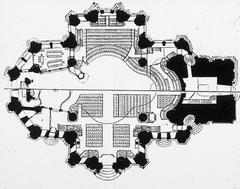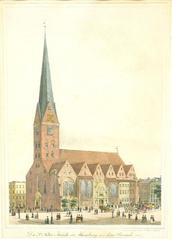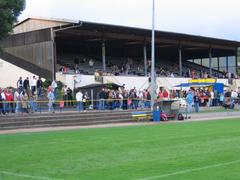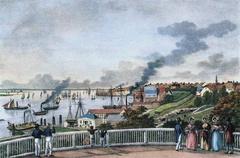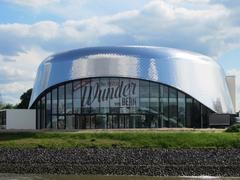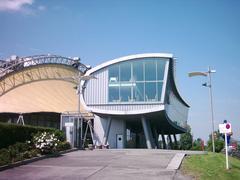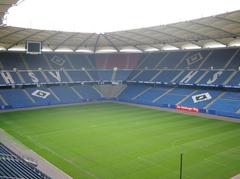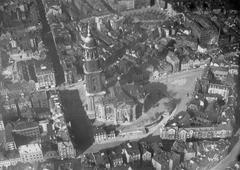Comprehensive Guide to Visiting Römischer Garten, Hamburg, Germany
Date: 25/07/2024
Introduction
Nestled on the picturesque southern slope of the Polterberg, the Römischer Garten is one of Hamburg’s hidden gems, offering a blend of historical richness and cultural significance. Established initially as a summer retreat in the late 18th century, the garden has undergone several transformations to become the Roman-inspired haven it is today. This comprehensive guide delves into the fascinating history of the Römischer Garten, from its early beginnings under auctioneer Hinrich Jürgen Köster, through its transformation by Anton Julius Richter, to its acquisition and enhancement by the Warburg family (Wikipedia, NDR, Komoot). Visitors can expect to find practical information on visiting hours, ticket prices, and accessibility, along with travel tips and nearby attractions. This guide also highlights the garden’s architectural and design significance, its cultural and historical impact, and its modern-day relevance as a cherished public park in Hamburg. Whether you’re a history enthusiast, a nature lover, or simply looking for a peaceful retreat, the Römischer Garten offers something for everyone.
Table of Contents
- Introduction
- History of Römischer Garten
- Visitor Information
- Travel Tips
- Nearby Attractions
- Special Events and Tours
- Architectural and Design Significance
- Cultural and Historical Impact
- Modern-Day Relevance
- FAQ
- Conclusion
- References
History of Römischer Garten
Early Beginnings and Initial Development
The origins of the Römischer Garten trace back to 1794 when the Hamburg auctioneer Hinrich Jürgen Köster acquired the land on the southern slope of the Polterberg. Köster, like many affluent Hamburg citizens of his time, sought a summer retreat outside the bustling city. In 1796, he constructed a wooden summer house on the hill, with its two-storey gable wall facing the Elbe River (Wikipedia).
Transformation into a Roman Garden
The transformation of the area into what is now known as the Römischer Garten began between 1880 and 1890 under the guidance of Anton Julius Richter. Inspired by his travels to Italy, Richter designed the garden with Mediterranean elements, deviating from the typical English landscape garden style prevalent along the Elbe (NDR).
Acquisition and Expansion by the Warburg Family
In 1897, the Jewish banking family Warburg purchased the property from Richter’s heirs. The Warburgs, particularly Moritz N. Warburg, were instrumental in further developing the garden. They commissioned senior gardener Else Hoffa to expand and enhance the garden, incorporating additional Mediterranean plants and design elements. The Warburgs also added a small amphitheater in 1924, which became a venue for summer festivals and theatrical performances, attracting Hamburg’s elite society (Komoot).
Decline During the Nazi Era
The idyllic existence of the Römischer Garten was disrupted during the Nazi era. The Warburg family, being Jewish, faced persecution and were forced to emigrate. Consequently, the garden fell into neglect and disrepair. The destruction caused by World War II further exacerbated the deterioration of the garden (NDR).
Post-War Restoration and Public Access
After the war, the Warburg family returned from exile and, in 1951, generously donated the Römischer Garten to the city of Hamburg with the stipulation that it be preserved. Despite this, the garden continued to languish until the early 1990s when the city undertook extensive restoration efforts to revive its former glory (Komoot).
Visitor Information
- Ticket Prices: The Römischer Garten is open to the public free of charge.
- Visiting Hours: The garden is open daily from dawn to dusk.
- Accessibility: The garden has several walking paths, some of which are steep and may not be suitable for visitors with mobility issues.
Travel Tips
- Best Times to Visit: Spring and summer are ideal times to visit when the garden is in full bloom.
- How to Get There: The garden is accessible via public transportation. Take the S-Bahn to Blankenese and then a short bus ride to the garden.
- What to Bring: Comfortable walking shoes, a camera for capturing the beautiful scenery, and perhaps a picnic to enjoy in the garden.
Nearby Attractions
- Jenischpark: Just a short distance away, this park offers beautiful walking trails and scenic views of the Elbe River.
- Elbe Beach: A perfect spot for a relaxing day by the water.
- Blankenese Treppenviertel: A charming district known for its picturesque stairs and lanes.
Special Events and Tours
The Römischer Garten hosts various cultural events, including theatrical performances and summer festivals. Guided tours are available during the warmer months, offering deeper insights into the garden’s history and design.
Architectural and Design Significance
The Römischer Garten stands out among Hamburg’s parks due to its Art Nouveau style, a rarity in the region where English landscape gardens dominate. The garden’s design includes terraced layouts, meticulously trimmed conifers reminiscent of Tuscany, and a central water lily pond. The amphitheater, with a seating capacity of approximately 200, remains a focal point for cultural events during the summer months (NDR).
Cultural and Historical Impact
The Römischer Garten is not just a botanical and architectural marvel but also a cultural landmark. It has hosted numerous theatrical performances and social gatherings, contributing to Hamburg’s cultural heritage. The garden’s history reflects the broader socio-political changes in Germany, from the affluent pre-war period through the turmoil of the Nazi era to the post-war recovery and preservation efforts (Wikipedia).
Modern-Day Relevance
Today, the Römischer Garten is a cherished public park, offering visitors a serene escape with its Mediterranean flair and stunning views of the Elbe River. It continues to serve as a venue for cultural events, maintaining its historical legacy while providing a tranquil retreat for locals and tourists alike (Hamburg.de).
FAQ
- What are the visiting hours for Römischer Garten? The garden is open daily from dawn to dusk.
- How much are tickets to Römischer Garten? Entry to the garden is free of charge.
- Is Römischer Garten accessible for visitors with disabilities? The garden has several walking paths, some of which are steep and may not be suitable for visitors with mobility issues.
Conclusion
The Römischer Garten’s rich history, from its inception in the late 18th century to its current status as a public park, underscores its significance in Hamburg’s cultural and historical landscape. The garden’s unique design, cultural contributions, and resilience through periods of neglect and restoration make it a noteworthy destination for anyone visiting Hamburg.
Call to Action
For more information on visiting Römischer Garten and other historical sites in Hamburg, download our mobile app Audiala. Stay updated with upcoming events and follow us on social media for more cultural insights and travel tips.
